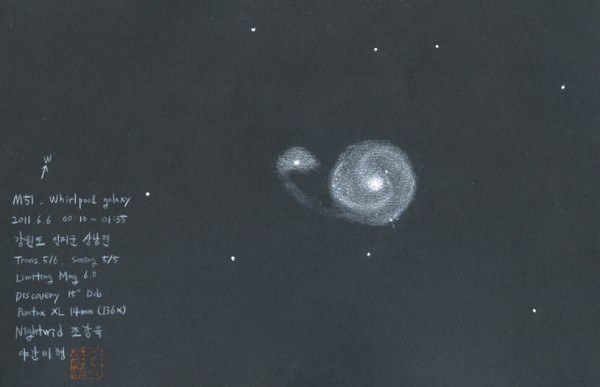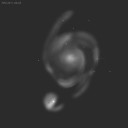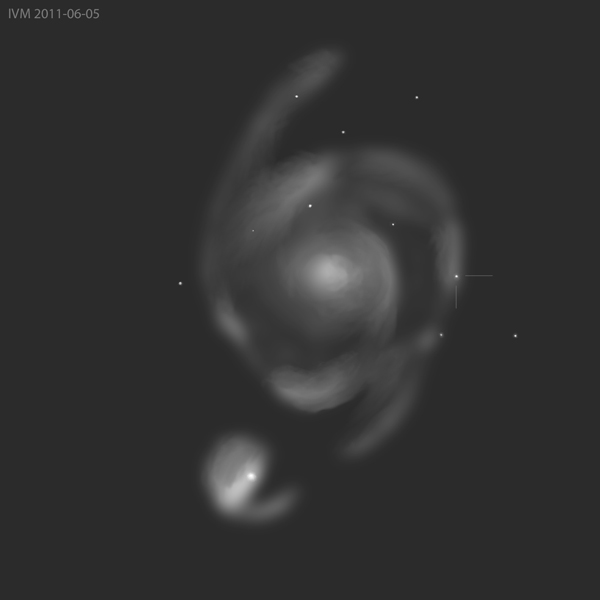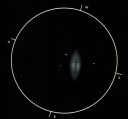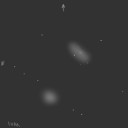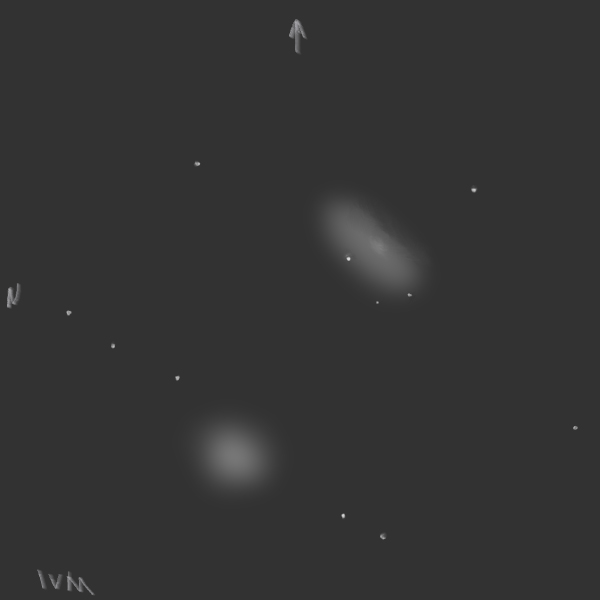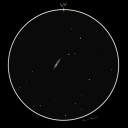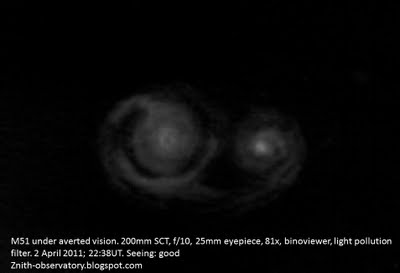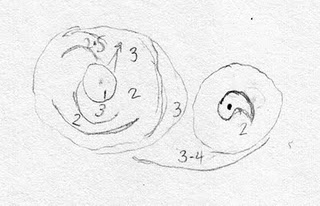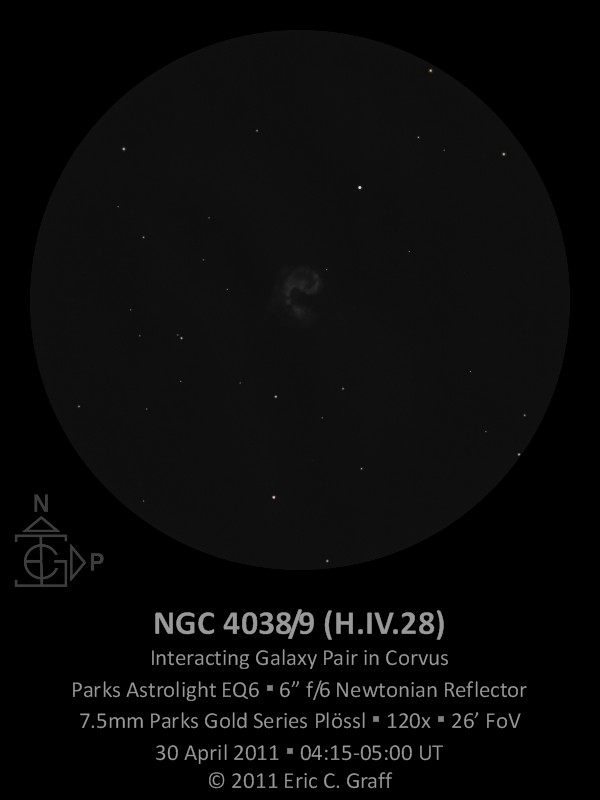
Object Name: NGC 4038/9
Also Known As: H.IV.28, Arp 244, the Antennae, Ring Tail Galaxies
Object Type: Interacting Galaxy Pair
Constellation: Corvus
Right Ascension (2000.0): 12h 01m 53.2s
Declination (2000.0): –18° 52′ 38″
Magnitude: 10.7
Dimensions: 4.5′ x 3.6′
Hubble Class: S?/pec
Distance: 63 million light years
Discovery: William Herschel on 7 February 1785 with 18.7-inch reflector
NGC Description: 4038 – pB, cL, R, vgbM; 4039 – pF, pL
Telescope: Parks Astrolight EQ6 • 6″ f/6 Newtonian Reflector
Eyepiece/Magnification: 7.5mm Parks Gold Series Plössl • 120x • 26′ Field of View
Filter: None
Date/Time: 30 April 2011 • 04:15-05:00 UT
Observing Location: Oakzanita Springs, Descanso, San Diego Co., California, USA
Transparency: NELM 6.2; TLM 14.2
Seeing: Pickering 7-8
Conditions: Clear, calm, cold, humid
This interacting galaxy pair is best located about 50 arc minutes NNE of the fifth magnitude star HD 104337, the brightest star on the western border of Corvus. While you are in the area you might do well to look for NGC 4027 30′ NW of HD 104337 and NGC 3981 68′ WSW of that star. The Antennae would be a challenging target for binocular observers.
At 30x magnification, this galaxy pair appears as a soft asymmetric patch of nebulosity, larger and brighter toward the north, smaller and fainter toward the south, but with no other details readily visible. Another soft, featureless patch of nebulosity may be glimpsed in the same field of view, 42′ away to the SW; this is NGC 4027, an 11th magnitude barred spiral galaxy and a fine target in its own right.
At 60x magnification, the Antennae or Ringtail galaxies are clearly resolved as two separate (though attached) objects. Together they look like a lopsided heart or a bloated “V”, with occasional glimpses of mottling across the face of the nebulosity. At 120x magnification the western rim (shaped like a backward “S”) of the pair is clearly brighter and more distinct than the rest of the object. During moments of good seeing this bright rim breaks into several distinct knots. The central region of NGC 4038 appears almost hollow by comparison; perhaps this is why Herschel catalogued this object as a planetary nebula. Averted vision revealed occasional glimpses of the base of the southern tail.
At 120x magnification NGC 4038 and NGC 4039 share the 26′ field of view with 9th-magnitude TYC 6097-326-1, white, about 6.5′ NW, 10th-magnitude TYC 6097-415-1, orange-red, about 9.5′ S, 11th-magnitude TYC 6097-619-1, yellow-white, about 10.8′ NE, 11th-magnitude TYC 6097-288-1, yellow-orange, about 13′ NNW, and 11th-magnitude TYC 6097-629-1, yellow, about 12.5′ NW. The remaining field stars are in the 12-14 magnitude range.
The sketch presented here depicts the view at high magnification (120x). The sketch has been rotated so that north is up and west is to the right. The sketch was executed with a No. 2 mechanical pencil with 0.5 mm lead, and two blending stumps (8948B, 8941B) on 100 lb. white card stock. The original drawing measures 7½ inches across.
This observation was made from a reasonably dark site (borderline blue-green on LP maps) at an elevation above 4,000 feet. The NELM was estimated at 6.2, the TLM at 14.2 in the vicinity of the target. The seeing conditions were above average (Pickering 7-8), but the humidity was quite high and care had to be taken to prevent dew from accumulating on optics and sketching materials. The temperature was 37°F. The air was very still and the high magnification views very steady.

